Sony’s new gaming brand merges the best of its PlayStation and consumer gear
[ad_1]
I’ve always wondered why aside from a handful of peripherals like the Pulse 3D headset and that weird 3D display, Sony never really tried to expand the PlayStation brand outside of consoles. And while you won’t find any PS logos on its new line of headsets and monitors, with Inzone it really feels like Sony is finally bringing its wider tech expertise to gaming.
Now the reason we haven’t seen a ton of PlayStation-branded peripherals before is because the Sony most people think about is actually a conglomerate of several companies that make everything from medical diagnostic tools to camera sensors. And in the case of Inzone, its new gaming gear isn’t being made by the same Sony that produces its iconic consoles (Sony Interactive Entertainment) but instead by the Sony that makes everyday consumer gadgets (Sony Corp/Sony Electronics) like TVs and headphones including the excellent WH-1000XM5.
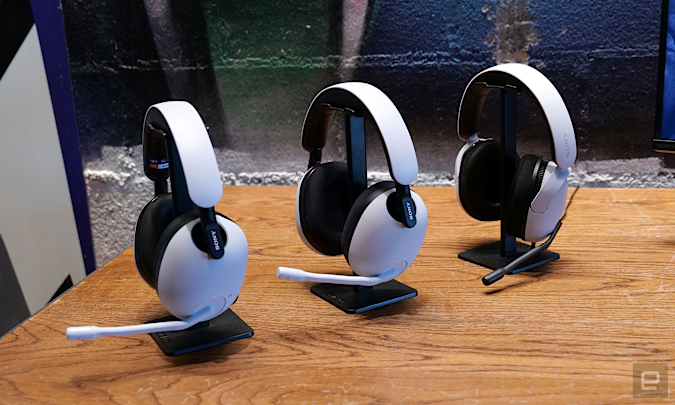
Sam Rutherford/Engadget
That’s important because, while these devices have design cues borrowed from the PS5, including their black and white color scheme and sleek sci-fi lines, much of the tech inside has trickled down from a range of Sony Electronics’ devices. And after using a handful of Inzone’s new peripherals for about a week, it really feels like you’re getting a great mix of tech from two different branches of Sony.
Let’s start with Inzone’s headphones which consist of three different models: the entry-level $99 H3, the mid-range $229 H7 and the high-end $299 H9. As the cheapest of the three, the H3 are incredibly simple and straightforward. Unlike their more expensive siblings, they don’t support wireless audio and instead rely on either a 3.5mm cord or a USB cable for connecting to your console or PC. On the bright side, the thick padded headband and cloth earcups make the H3 a joy to wear, even during marathon gaming sessions.
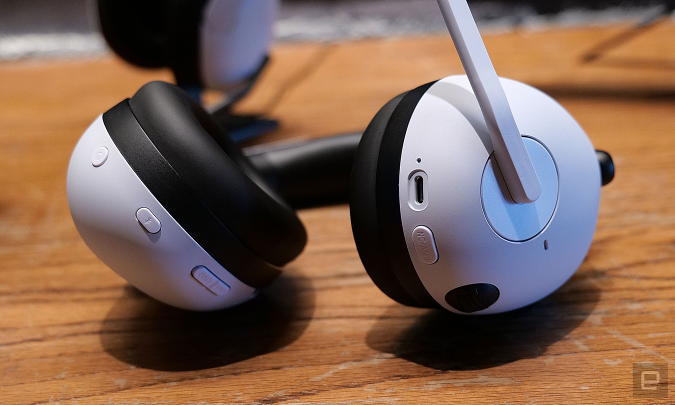
Sam Rutherford/Engadget
Another bonus is that due to cooperation between two arms of Sony, all Inzone headsets, including the H3, support the PS5’s Tempest 3D audio engine just like you get on the official Pulse 3D headphones. That means you get spatial audio and customizable sound profiles that make it easier to hear things like the footsteps of someone trying to sneak up behind you. That said, with the Pulse 3D also costing just $99 for wireless headphones that are just as comfortable as the H3, I think they’re probably the better buy for anyone on a budget.
Where things get really interesting though is when you move up to the H7 and H9, which feature dual-mode wireless connectivity (Bluetooth and a dedicated 2.4GHz wireless dongle), a slightly more streamlined design and strong battery life. On top of that, the H9 also feature digital noise canceling using the same tech as Sony’s 1000X line, and it shows.
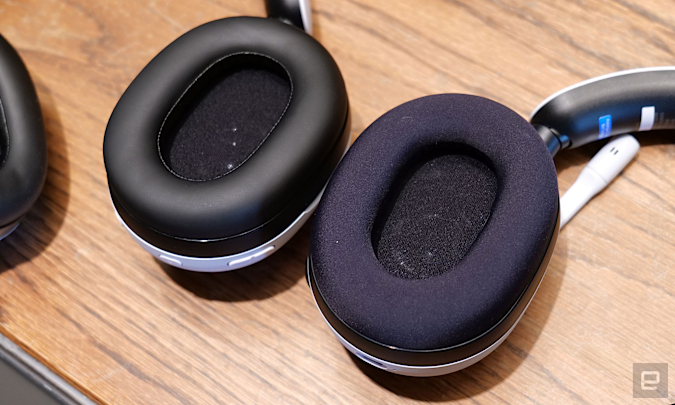
Sam Rutherford/Engadget
Now I should mention Sony was only able to send out the H3 and H9 for testing, so I’ve been using those for my comparisons. But the H7 and H9 are fairly close in terms of specs, with the main difference being the H7’s lack of exterior RGB lighting, no support for digital noise canceling and the use of cloth earcups instead of the soft fit leather padding you get on the H9 (which is the same material Sony uses on the WH-100XM5). In return, because they don’t have built-in noise canceling, the H7 offer slightly longer battery life (around 40 hours) compared to the H9 (around 32 hours).
Regardless, my time with the H9 so far has been great, and in a lot of ways, they feel like a pair of WH-1000XM5 that have been tuned for gaming. The noise cancellation works wonders for drowning out background sounds, and the super supple leather makes wearing them feel like putting a cloud around your head.
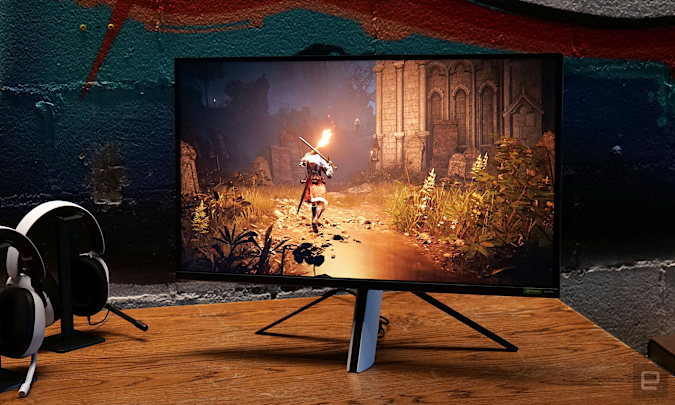
Sam Rutherford/Engadget
I also really appreciate some of the small details Sony added to the H9. On a lot of headphones that offer two modes of wireless connectivity, you can typically only use one type at a time. But with the H7 and H9s, you can connect to two different devices simultaneously. This means you can use the wireless dongle to connect to your PlayStation or PC, and then use Bluetooth to get audio from your phone. And because the PS5 doesn’t have native support for chat apps like Discord, this makes it much easier to talk to your friends regardless of what platform you’re on at the moment.
Additionally, the H7 and H9 are the only other headphones besides the Pulse 3Ds that can use the PS5’s on-screen status notifications, which means you can see stuff like volume levels, battery status, mic mute, and game/chat balance all at glance. So while they aren’t the PS5’s official headphones, they behave like they are, while also offering even more features and better audio quality. And just like the WH-1000XM5, you can even use your phone to take a picture of your ear, to tune their sound even further.
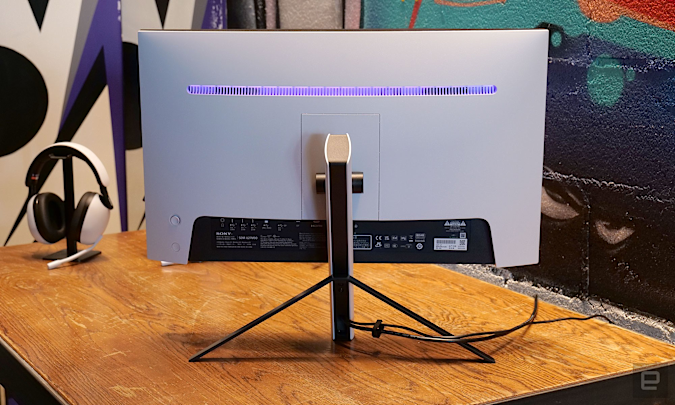
Sam Rutherford/Engadget
As for Inzone’s new monitors, there’s the $529 M3 and the $899 M9. However, since the M3 won’t be available until sometime this winter, I’m going to focus on my time with the M9. Featuring a 27-inch 4K IPS panel with a 144Hz refresh rate, the M9 isn’t the biggest or fastest gaming monitor around. But for the money, it packs a ton of features compared to similarly-priced rivals. Not only does it support VRR and NVIDIA G-Sync, it also sports a strong one millisecond gray-to-gray time, DisplayHDR 600 certification and a gamut that covers more than 95 percent of the DCI-P3 spectrum. In short, colors are bright, rich and vivid while also being largely immune from the ghosting you often see on less sophisticated displays.
However, the M9’s biggest advantage is its full-array local dimming (FALD) which is made up of 96 different lighting zones compared to just eight or 16 on competitors like the LG 27GP950 or the Samsung S28AG700. And after seeing the results side-by-side, I was kind of shocked at how much of a difference the M9’s FALD makes. A lot of gamers can spot bloom in games when something bright moves quickly across a dark background, which often produces ring of light around the object. But not only does the M9 almost completely eliminate halos, the ability to adjust lighting zones with greater precision also gives the monitor improved dynamic range. So in games like Elden Ring, I saw backgrounds that were much darker and atmospheric compared to the washed-out gray tones I saw on other monitors. This allows you to get much better contrast and black levels without needing to upgrade to more expensive QD-OLED displays like Alienware’s $1,300 AW3423DW.
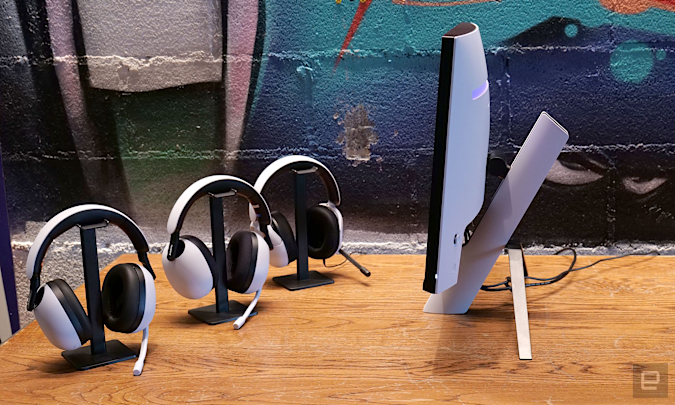
Sam Rutherford/Engadget
And just like its headphones, Inzone’s first monitor has a lot of really thoughtful smaller features. It has a built-in KVM switch, which is extremely useful if you have multiple PCs connected to the same display. It also has a native FPS counter so you can easily keep tabs on performance, while the monitor’s Auto Genre Picture Mode can switch between settings like Cinema Mode and Gaming Mode depending on the content coming from your PS5. And in addition to being height and tilt adjustable, Sony even designed the M9’s stand so that its feet stick out towards the back, which means PC gamers who need to place their keyboard as close as possible to their monitor like Dafran totally can.
But perhaps my favorite little touch, is the software that allows you to navigate the monitor’s on-screen display with your mouse, instead of having to fumble around with the joystick on the back of the panel. The M9 even comes with built-in stereo speakers, so you can plug in your PS5 and get straight to gaming without worrying about audio. And thanks to two HDMI 2.1 ports, one DisplayPort 1.4 jack, support for video over USB-C (DP Alt mode) and a built-in USB Hub, there’s a wealth of connectivity.
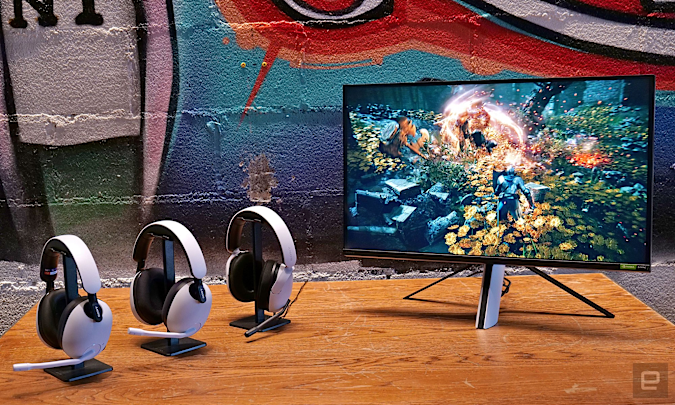
Sam Rutherford/Engadget
So aside from the H3 which is somewhat basic, I’ve come away quite impressed with Inzone’s first batch of PC and console gaming peripherals. That said, looking at the pedigree of these two faces of Sony, that probably shouldn’t be a surprise. It might not say so on the box, but in a lot of ways, this feels like the marriage between PlayStation and the tech from some of Sony’s best gadgets. But what might be the most promising part is that while Inzone hasn’t shared any future plans just yet, after talking to some of its reps, it’s clear Sony has big plans for its new gaming brand going into 2023 and beyond.
All products recommended by Engadget are selected by our editorial team, independent of our parent company. Some of our stories include affiliate links. If you buy something through one of these links, we may earn an affiliate commission.
[ad_2]
Source link








